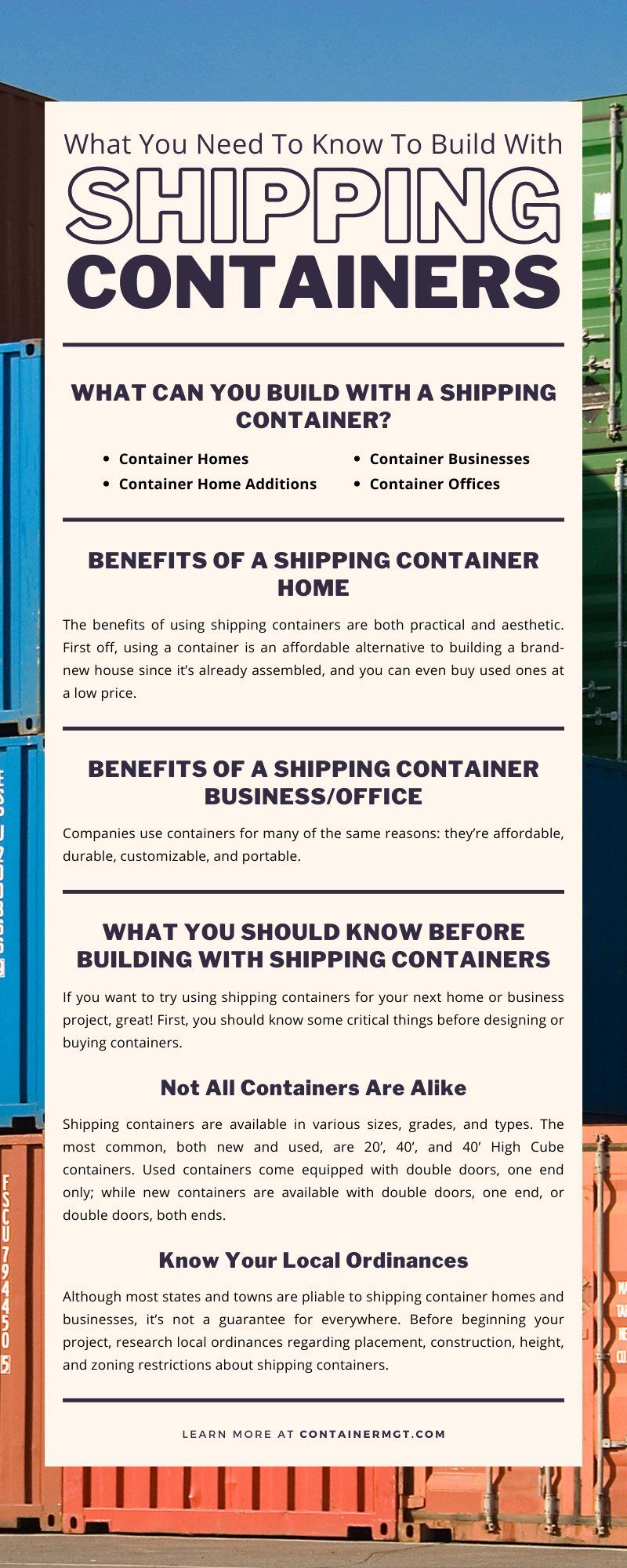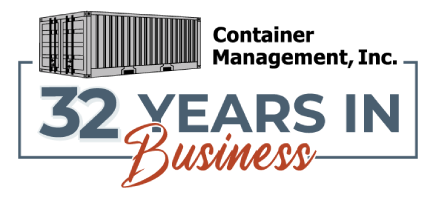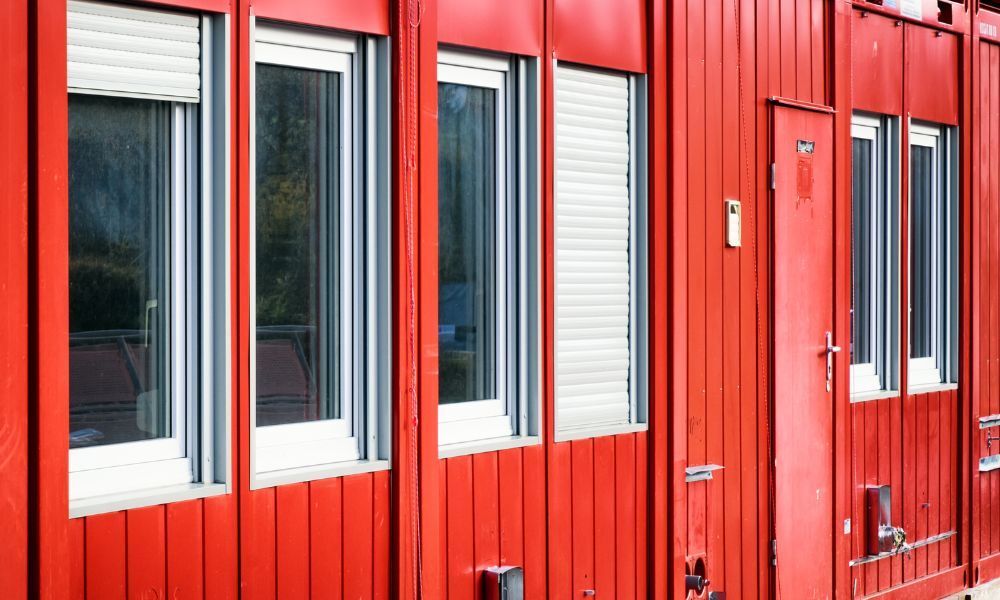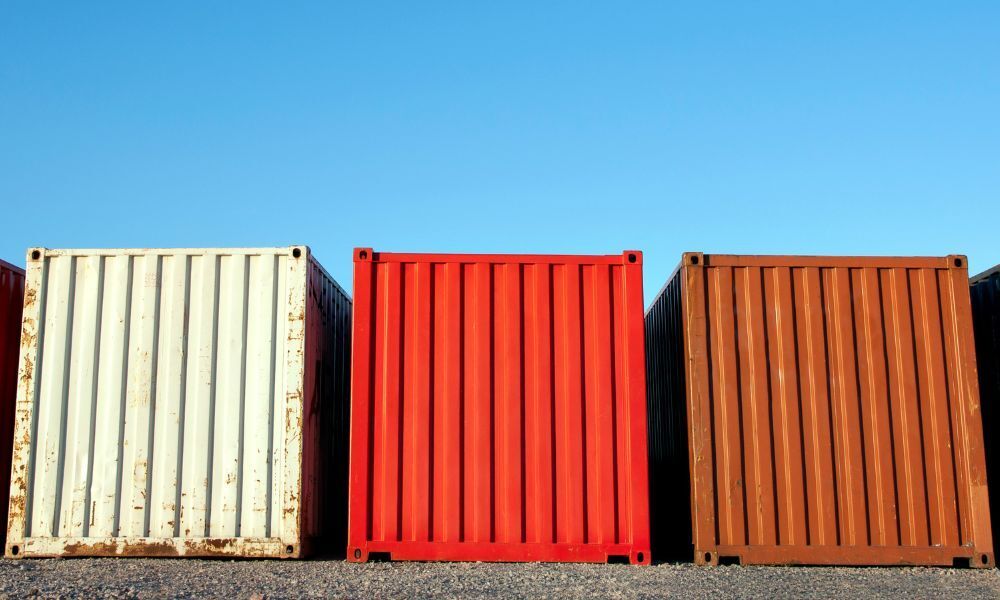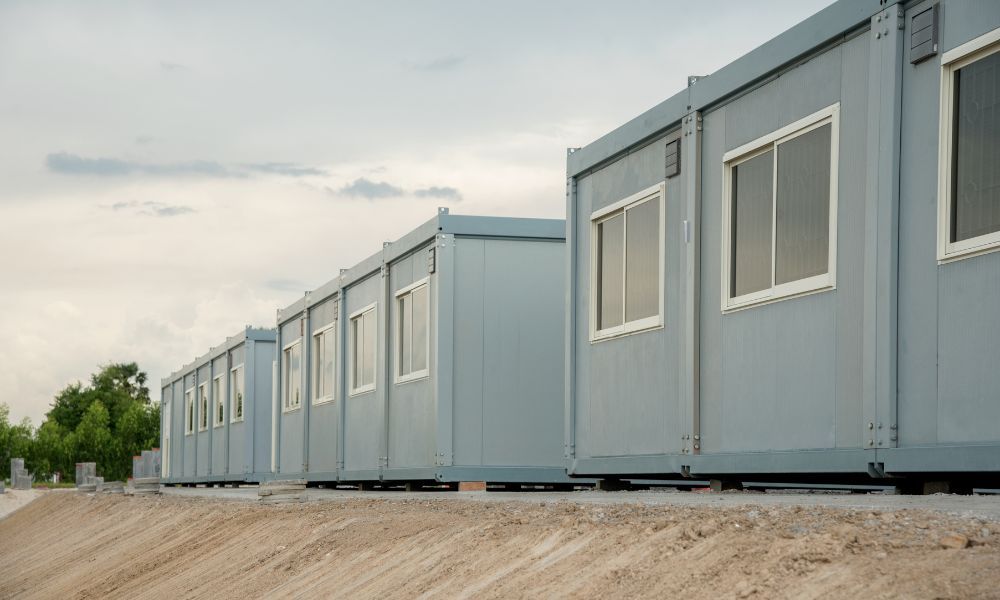See our related article:
What You Need To Know To Build With Shipping Containers
Written by Susan Nalevac | Updated September 13, 2024
One of the hottest trends in housing and business construction is shipping containers! These steel boxes, although designed for transporting goods, can be used to build homes and businesses too!
If you’re considering using an alternative construction method and materials, read our breakdown of what you need to know to build with shipping containers!
In This Article:
What Can You Build With a Shipping Container?
Before we get into all of the details, big and small, you need to know about these containers. Let’s talk about the many things you can build with shipping containers!
Container Homes
One of the first things people started building with shipping containers was homes! In the past decade or so, tiny houses came onto the housing scene as a more affordable and efficient alternative for those who wanted a home but didn’t want to pay for new construction or massive renovation.
Soon, people discovered that shipping containers made ideal building material for tiny homes because of their size, affordability, and versatility. That started the single-container home trend. Since then, it’s grown to where some homeowners build with multiple containers, either combined or stacked on one another, to create a home similar in size to traditional houses.
Whether you want a simple tiny home or something more expansive, shipping containers could be just the materials you need to make your dream house come true at an affordable price!
Container Home Additions
Shipping containers can act as the homes themselves, or they can function as additions to existing homes. Instead of building an entirely new addition to your home, you can knock down a wall, combine it with a container, and have half the job done immediately!
Some homeowners place the container in their backyard or property space and use it as an extra shed or storage place. You can even outfit containers with furniture, plumbing, and a bed to create a rental home right on your property! Some ways homeowners use shipping containers for their homes include:
- Storage unit
- Garage
- Workshop
- Home office
- Lounge area
- Cinema
- Kids play area
Container Businesses
However, containers aren’t just for recreation and homes. Shipping containers are also popular with businesses looking to add to their square footage or a temporary pop-up shop!
For example, say an online retail business needs to order more inventory to keep up with demand—instead of renting out a whole building, they can purchase a shipping container. Or a restaurant can turn a container into an outdoor bar for a big event to deal with increased customer demand.
Container Offices
Another way businesses capitalize on shipping containers is by using them as offices. Once modified and furbished, containers can make comfortable and efficient temporary or even permanent offices.
If you’re building a permanent office location but need somewhere to put your desk in the meantime, consider a shipping container! Next time you drive by a construction site, there’s a good chance you’ll see a shipping container used as an office by contractors.
Why People Build With Shipping Containers
There are many things you can build and do with shipping containers, but that doesn’t explain why people use them. What’s the benefit of a container over the traditional construction materials?
Benefits of a Shipping Container Home
The benefits of using shipping containers are both practical and aesthetic. First off, using a container is an affordable alternative to building a brand-new house since it’s already assembled, and you can even buy used ones at a low price.
Since containers come pre-assembled and only require simple modifications (insulation, plumbing, windows, doors), you can build them much quicker than a brand-new or renovated home. Also, because you’re not using raw materials to make the home, container homes have a smaller carbon footprint and are eco-friendly.
But it’s not just for practical reasons that people use containers—many love the personalization that container homes allow! A container may start as a simple steel box, but there are few limits to what you can do with it, thanks to its simple design and rugged durability. They’re like a blank canvas for home design!
Benefits of a Shipping Container Business/Office
Companies use containers for many of the same reasons: they’re affordable, durable, customizable, and portable.
Suppose a business wants to do a temporary pop-up shop. A container is ideal because you can transport it and place it practically anywhere! Do you need more physical storage space for increased inventory?
A shipping container will securely and safely protect your stock at an affordable price, and you can quickly resell it after.
What You Should Know Before Building With Shipping Containers
If you want to try using shipping containers for your next home or business project, great! First, you should know some critical things before designing or buying containers.
Not All Containers Are Alike
Shipping containers are available in various sizes, grades, and types. The most common, both new and used, are 20’, 40’, and 40’ High Cube containers.
Used containers come equipped with double doors, one end only; while new containers are available with double doors, one end, or double doors, both ends. Shipping containers continue to be built today with 1 1/8” laminated, marine-grade plywood floors. The industry is looking at utilizing composite material floor installations in the future. All new and used 20’ containers will have fork-lift pockets in the bottom rail.
Here's a comprehensive overview of shipping container sizes, grades, and types: About Shipping Containers
Know Your Local Ordinances
Although most states and towns are pliable to shipping container homes and businesses, it’s not a guarantee for everywhere.
Before beginning your project, research local ordinances regarding placement, construction, height, and zoning restrictions about shipping containers.
Where To Put a Shipping Container
You can transport containers practically anywhere, but you’ll need to prepare the exact spot beforehand. Ideally, you want to put your container on even, level ground.
Often a simple gravel foundation will suffice, or for more permanent structures, you may choose to have installed a more stable foundation such as asphalt or cement.
Insulating Containers
Shipping containers aren’t designed to comfortably house people, so they require some modifications. Namely, you’ll want to install insulation for the cold months and nights, which you can do relatively quickly and affordably.
Don't Forget Natural Light
Remember that containers don’t invite natural light inside, so make it an emphasis in your design. Consider large windows and skylights, and place the container in proportion to the sun’s trajectory to get as much natural light inside as you can.
Moisture Is Your Enemy
Shipping containers are durable and can handle rain and snow—they cross oceans, after all! But your main maintenance concern will still be keeping it dry.
Consider some protective overheard barriers to keep water and snow from pooling on its roof and regularly check the corners and walls for pools of water and rust.
Conclusion
We’ve covered a lot of what you need to know to build with shipping containers, but there’s still much more! If you have any questions about shipping containers, from their dimensions to their costs, consult with the experts at Container Management Inc.!
